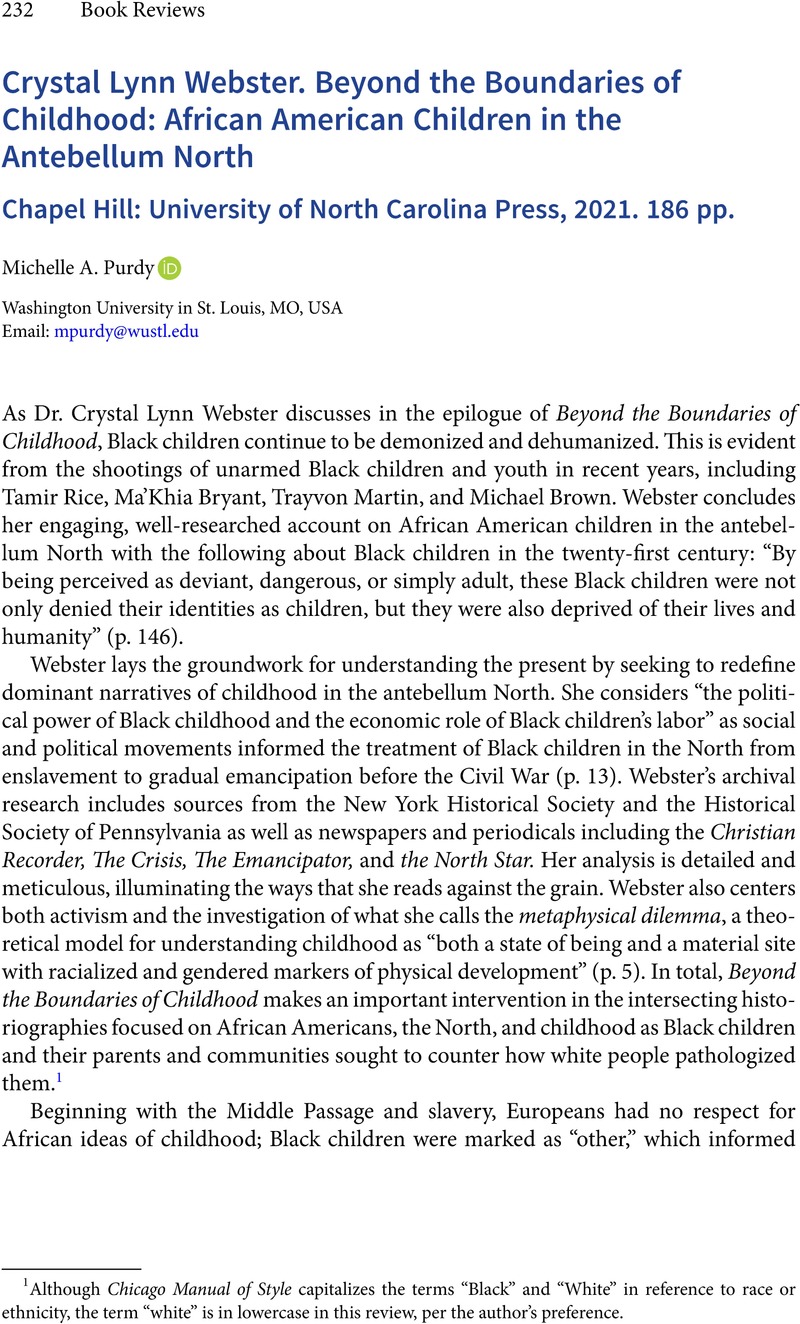No CrossRef data available.
Published online by Cambridge University Press: 16 May 2024

1 Although Chicago Manual of Style capitalizes the terms “Black” and “White” in reference to race or ethnicity, the term “white” is in lowercase in this review, per the author’s preference.